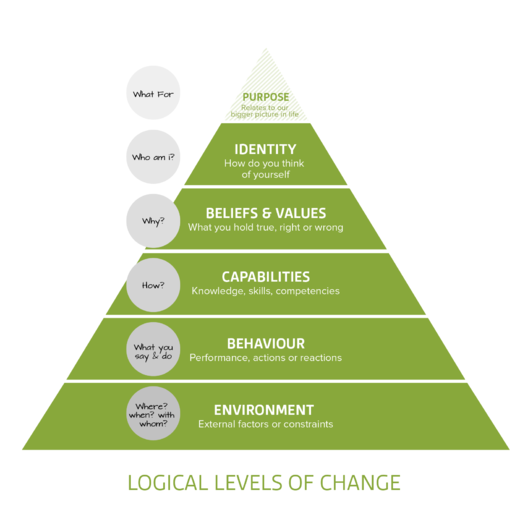
Why sales coaching needs to get closer to the individual
Have you heard the phrase, “Never in the history of calming down, has anyone ever actually calmed down, by being told to calm down”?
The same can be said in sales: “Never in the history of improving sales numbers, has anyone ever improved sales numbers, by being told to improve sales numbers.”
Looked at this way, it seems ludicrous that anyone would simply tell salespeople to increase their numbers and expect it to happen… yet we do it all the time. When the business plan calls for larger revenue numbers or higher profit margins, the call gets sent down the line to the sales department, and the sales leadership passes the new numbers on to the salespeople in the form of higher quotas, more aggressive win rates, and other numerical demands.
Rarely, are the salespeople provided with effective resources to make those numbers happen.
Sometimes, they may be offered new technology, a weekend of training, or new “carrots and sticks” in the form of rewards and commission restructuring. But the reality is, these hands-off approaches to “improving” sales numbers are rarely effective.
Why is that?
For the same reason that your friend who is freaking out over bad news won’t calm down just because you hand them a meditation CD and offer to buy them ice cream next week.
Because salespeople are human, and humans aren’t motivated by being told what to do. In fact, humans aren’t readily motivated by external motivators much at all, whether it’s words, rewards, or environmental changes (like new tools).
To understand how to motivate salespeople to improve their performance, we have to understand what does, in fact, motivate humans.
The Logical Levels of Change
According to the discipline of neuro-linguistic programming (NLP), humans operate on six logical levels of change. At the highest level is the level of purpose, and at the bottom is the environment.

Changes at the bottom are relatively easy to make, but generally, don’t have a big impact on things at the top. Changes at the top can be incredibly difficult to make, but they usually will have an impact all the way down to the bottom.
For instance, you can buy new technology (change the environment) and force salespeople to use it, and they might. However, if the change is made without additional support or strategic alignment, it won’t ultimately change their performance. Likewise, environmental changes including traditional “carrot and stick” compensation can support better performance from folks who are motivated by those things but will mostly fall flat.
On the other hand, if you can get a salesperson to truly identify (identity) as a powerful salesperson who deeply believes (beliefs and values) in your company and the products and services you offer (a difficult proposition, indeed), they will naturally be motivated to improve their capabilities and behaviors, and will create a more supportive environment for themselves and others.
To Make Changes, Our Coaching Must Get Closer to the Individual
Thus you can see that in order to improve sales performance, we can’t rely on changes sent down “from above” or tools like sales force automation, which represent only a change in the environment.
We must get close enough to each individual to begin affecting change at the higher levels of the pyramid.
And that means we need more effective, more personal coaching.
Coaching takes many forms–there’s pipeline coaching, deal coaching, call coaching, etc. But to truly enable your sales team, your salespeople need deeper coaching, on a personal level, to break free from fears and limiting beliefs that are holding them back. Getting people to open up on a personal level requires a lot of trust and coaching skills, so this is not for the faint-hearted, and many frontline sales managers might not have what it takes. When this is the case, I'd recommend bringing in an external coach.
They need the skills and the time to get close to each individual and find out:
- What is your purpose in life?
- Who are you and how do you view yourself?
- What do you believe about yourself?
Only at this level can a coach begin to understand what truly motivates each person, and what is needed to help them achieve the success they want in their job and life. Good questions for coaches to ask include:
- Why are you working as a salesperson?
- What are your personal goals?
- What are your career goals?
- Do you understand how your sales goals support those things? Do they support them?
Addressing the higher levels of motivation also requires coaches to dig below the surface of numbers to understand the “why” behind problems and obstacles. Asking the question “why” multiple times in a coaching session can help get closer to what’s really in the way. This often results in the discovery of a limiting belief or another obstacle that can then be addressed more effectively.
On the topic of "Why," here’s a hilarious video by Luis CK:
How Tools Can Support Closer Coaching
Changing the environment (tools) won’t automatically make salespeople more effective. But the right environmental changes can support changes at the higher levels. For instance, great sales analytics and an effective coaching dashboard can help coaches see problems early and identify areas to investigate with salespeople during coaching sessions.
Tools like Objective Management Group’s assessments can help identify limiting beliefs and other high-level problems so you can get right to work addressing them. Call-recording and coaching software like Refract is great to listen in to calls, capture and train best-practices.
Having this information at your fingertips can help coaches to identify obstacles at a high level and address them so that changes can be made at the lower levels as well.
We’re currently in the process of designing a “coaching cockpit” inside of Membrain for sales managers and professional sales coaches and I’m curious: what would the ideal “coaching “cockpit” look like to you? Please tell us in the comments, or drop me an email!

By George Brontén
George is the founder & CEO of Membrain, the Sales Enablement CRM that makes it easy to execute your sales strategy. A life-long entrepreneur with 20 years of experience in the software space and a passion for sales and marketing. With the life motto "Don't settle for mainstream", he is always looking for new ways to achieve improved business results using innovative software, skills, and processes. George is also the author of the book Stop Killing Deals and the host of the Stop Killing Deals webinar and podcast series.
Find out more about George Brontén on LinkedIn







